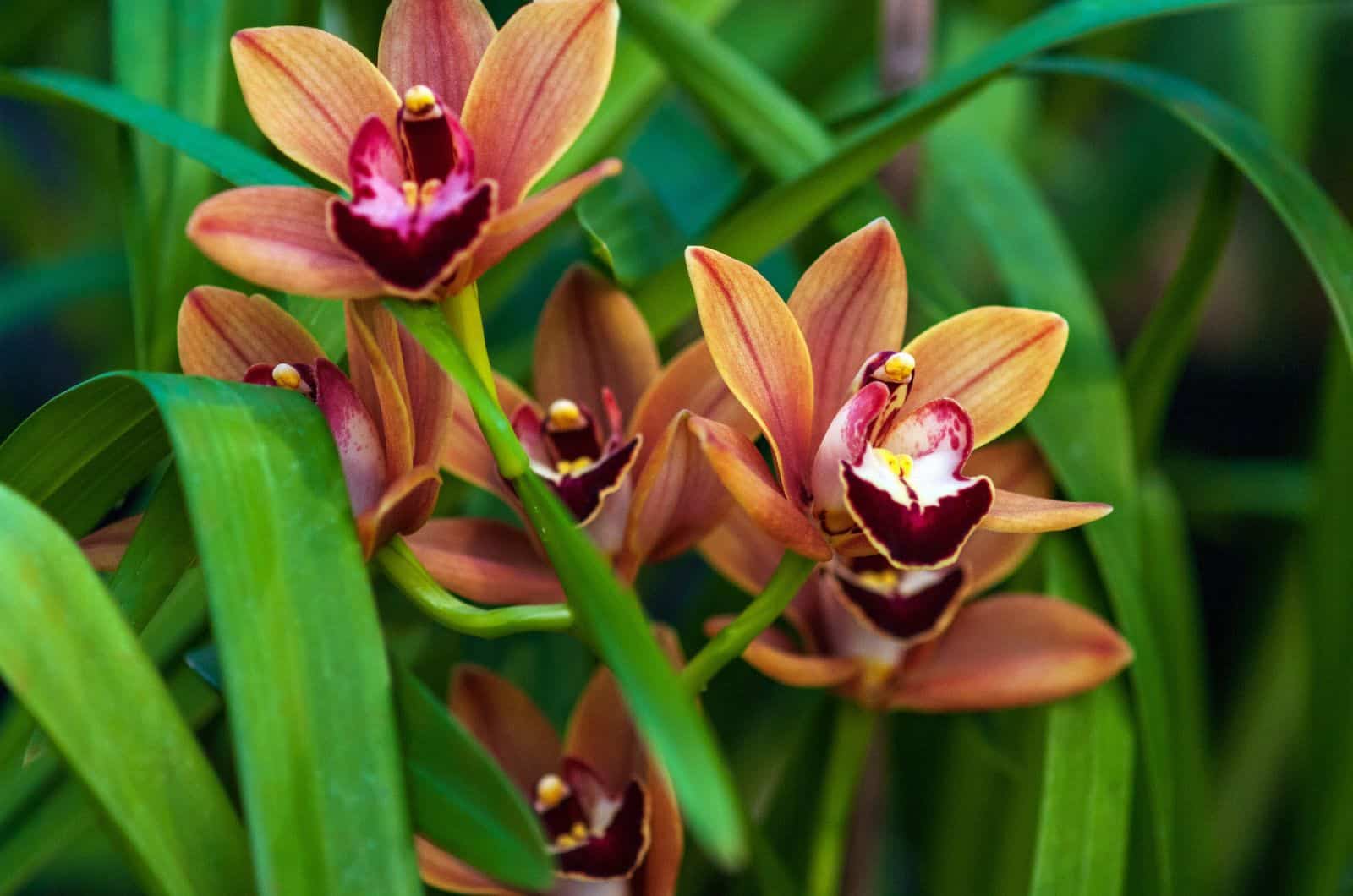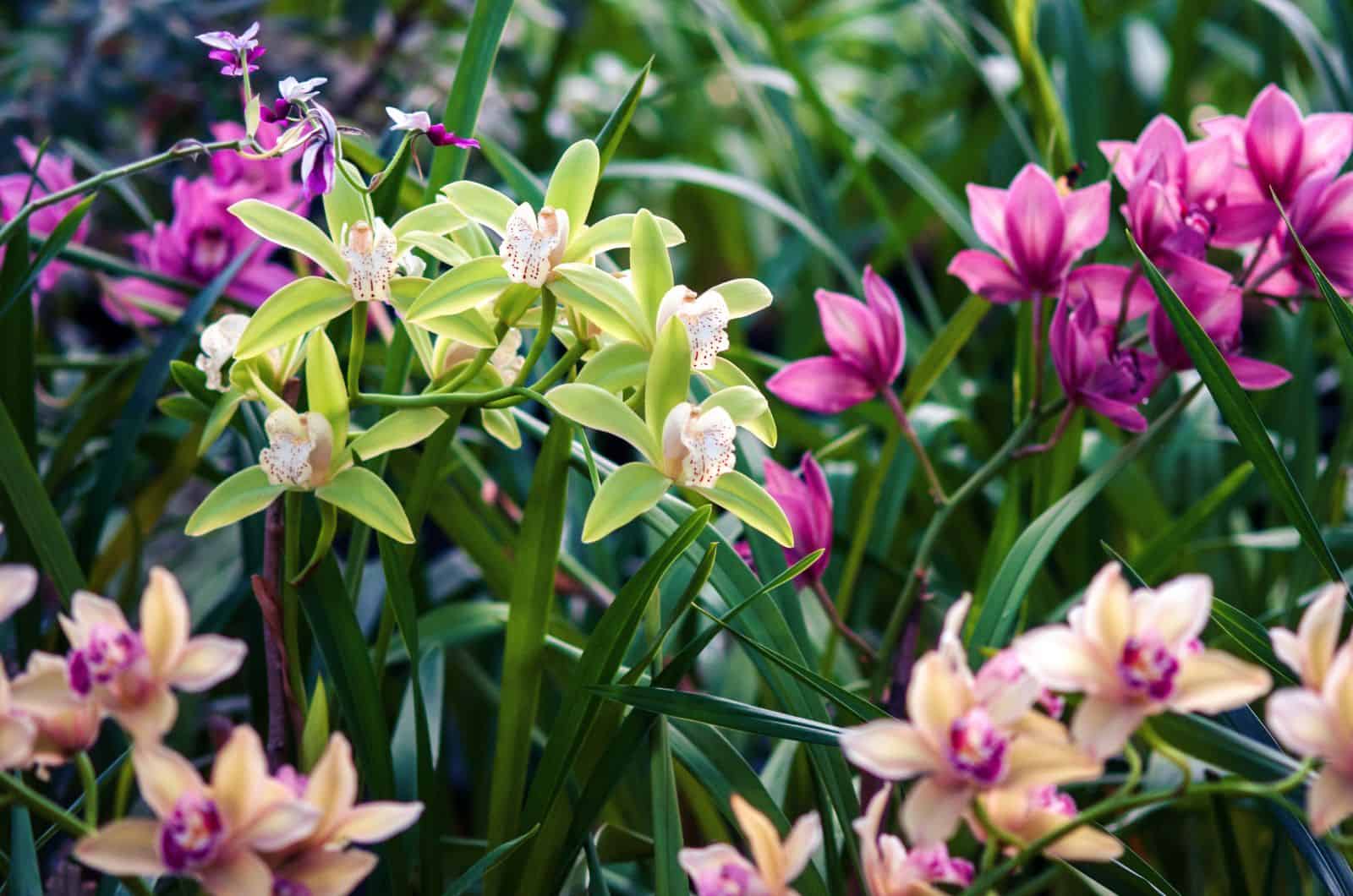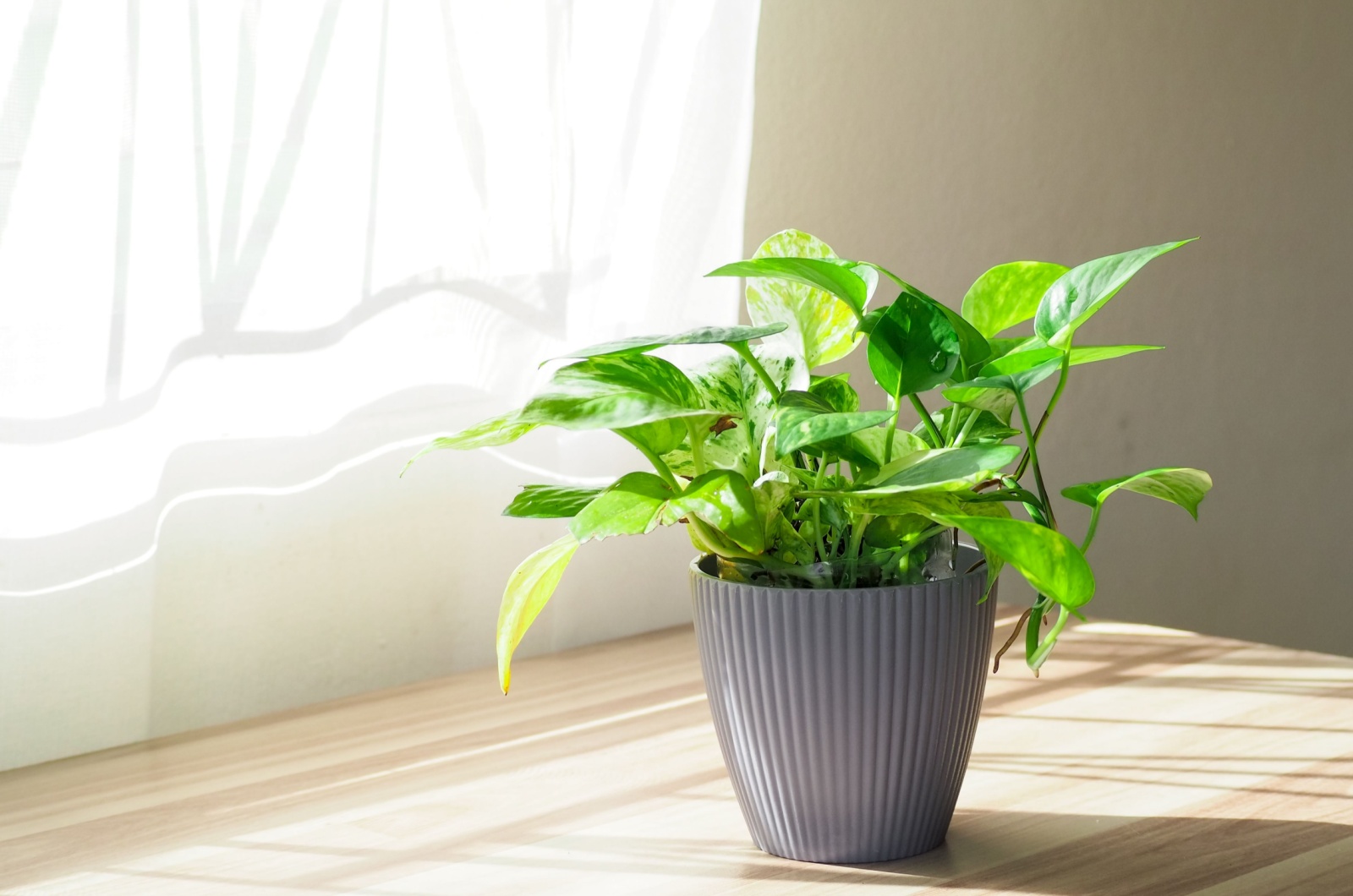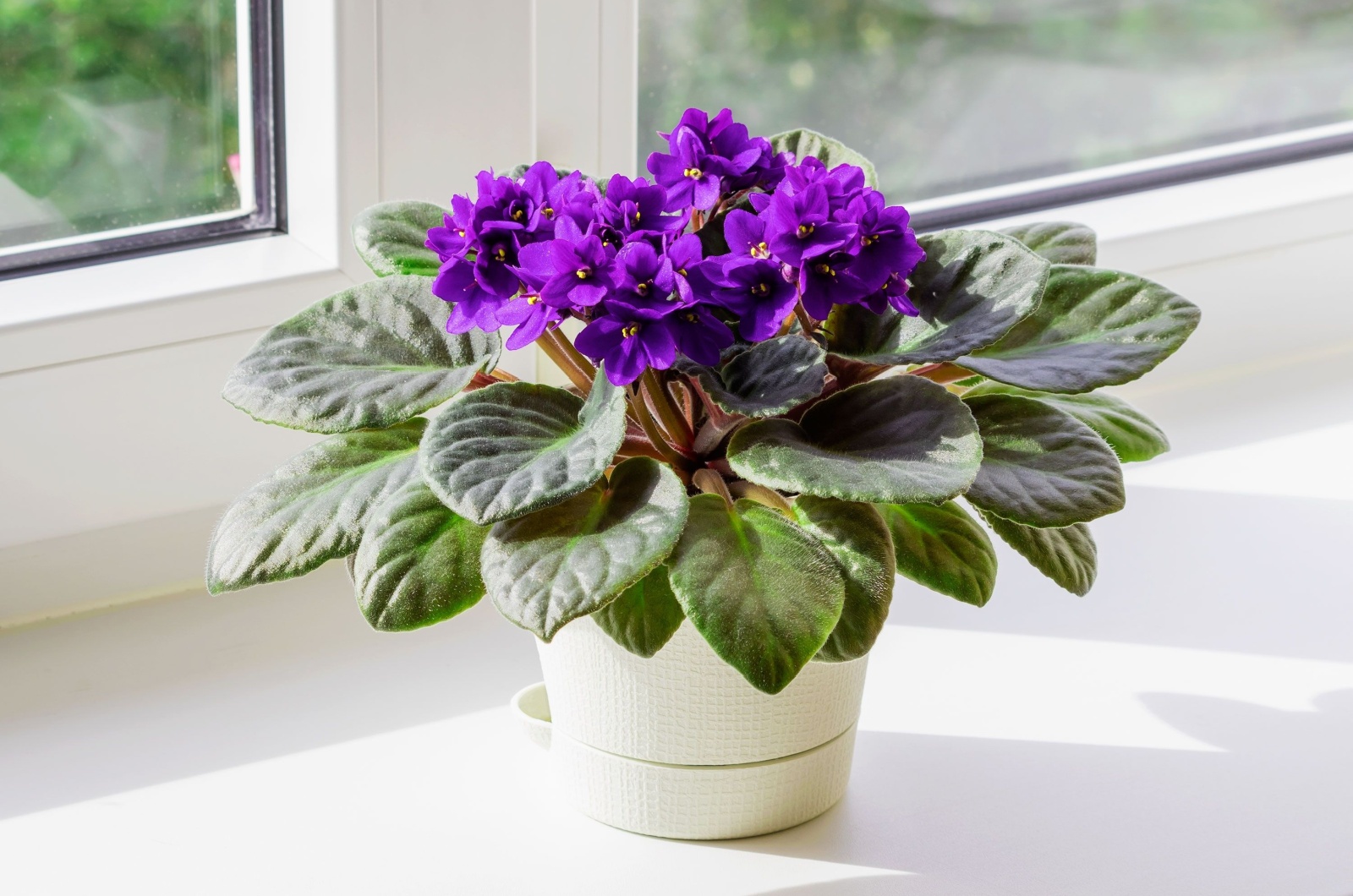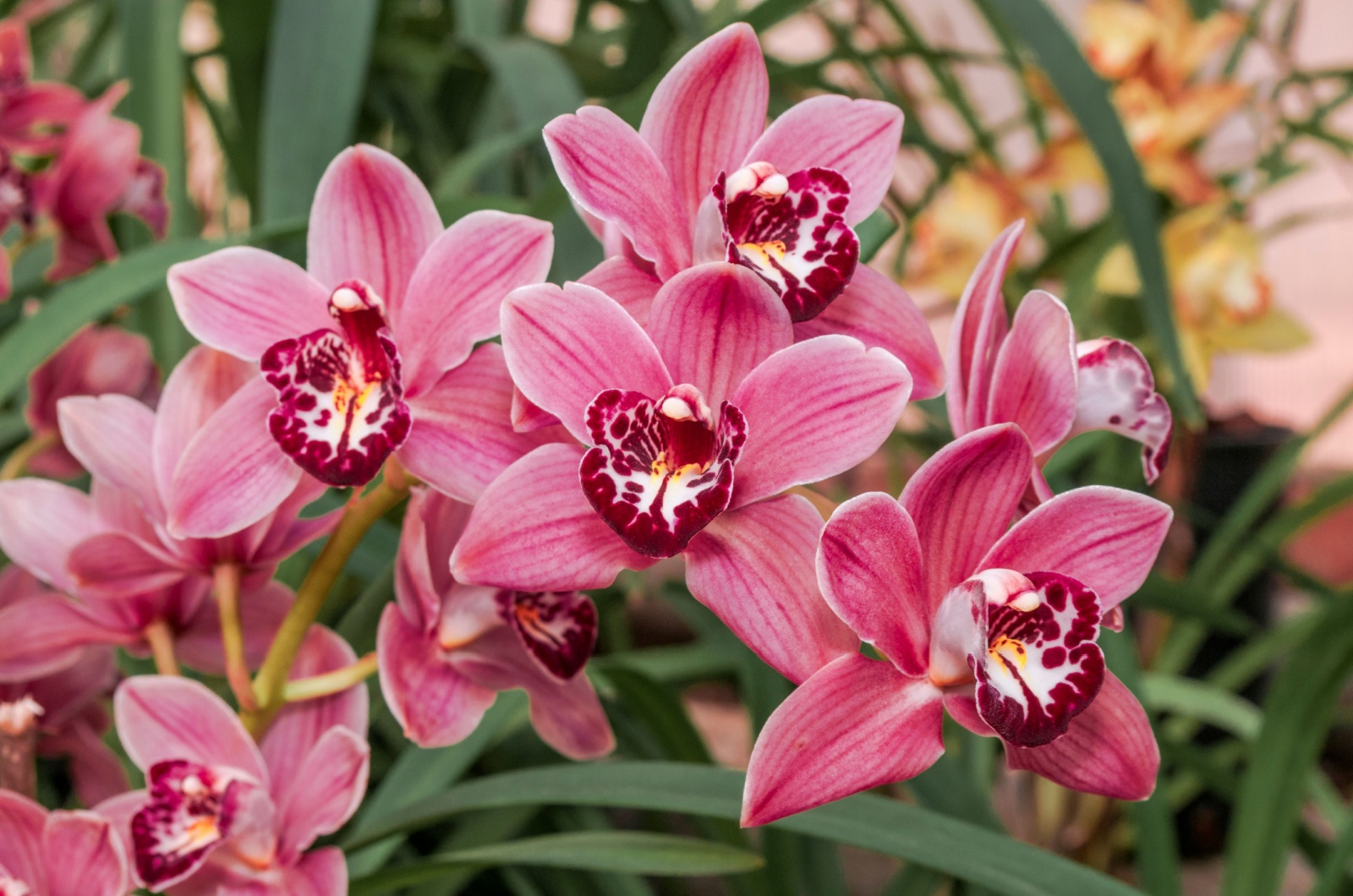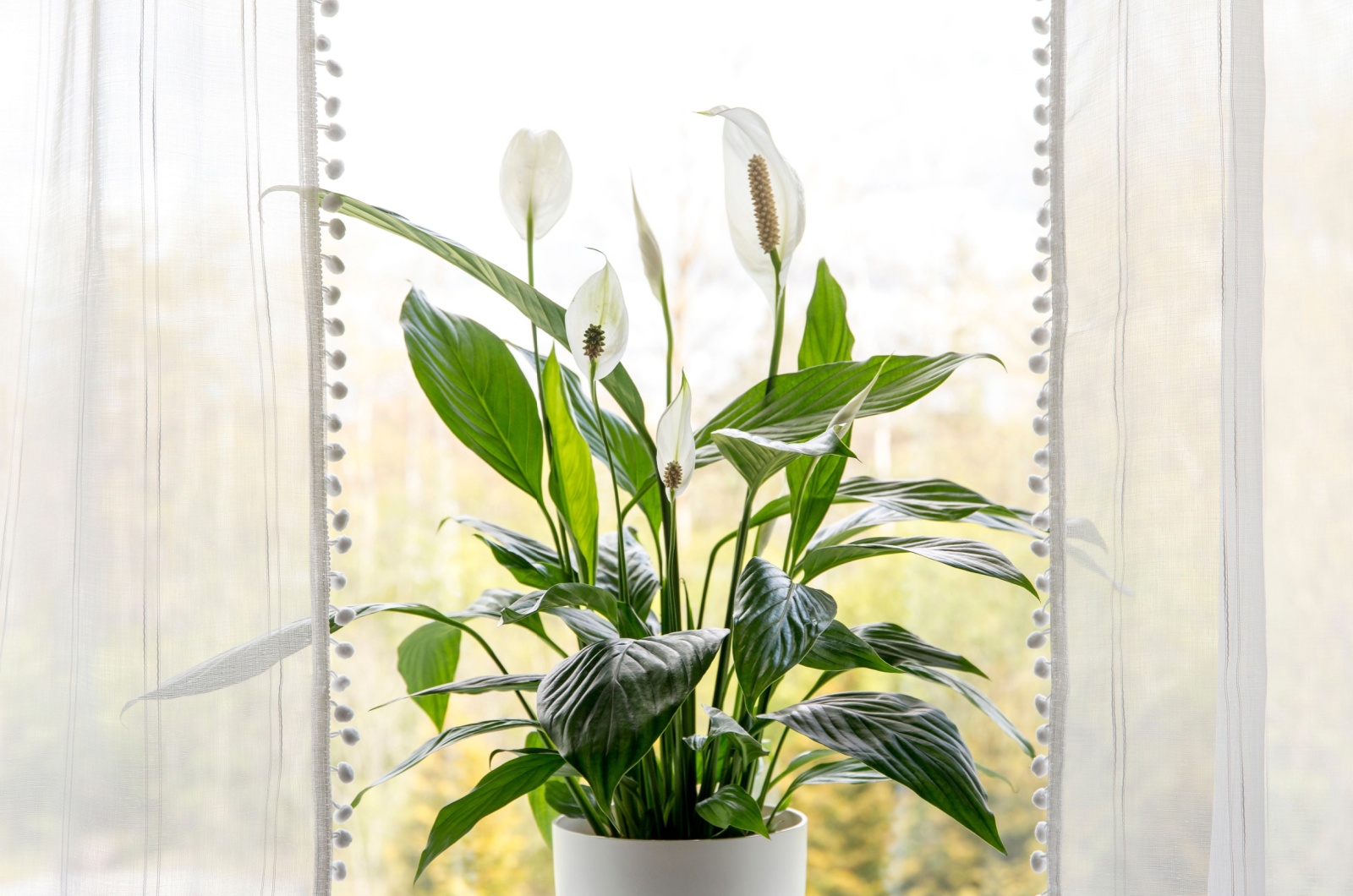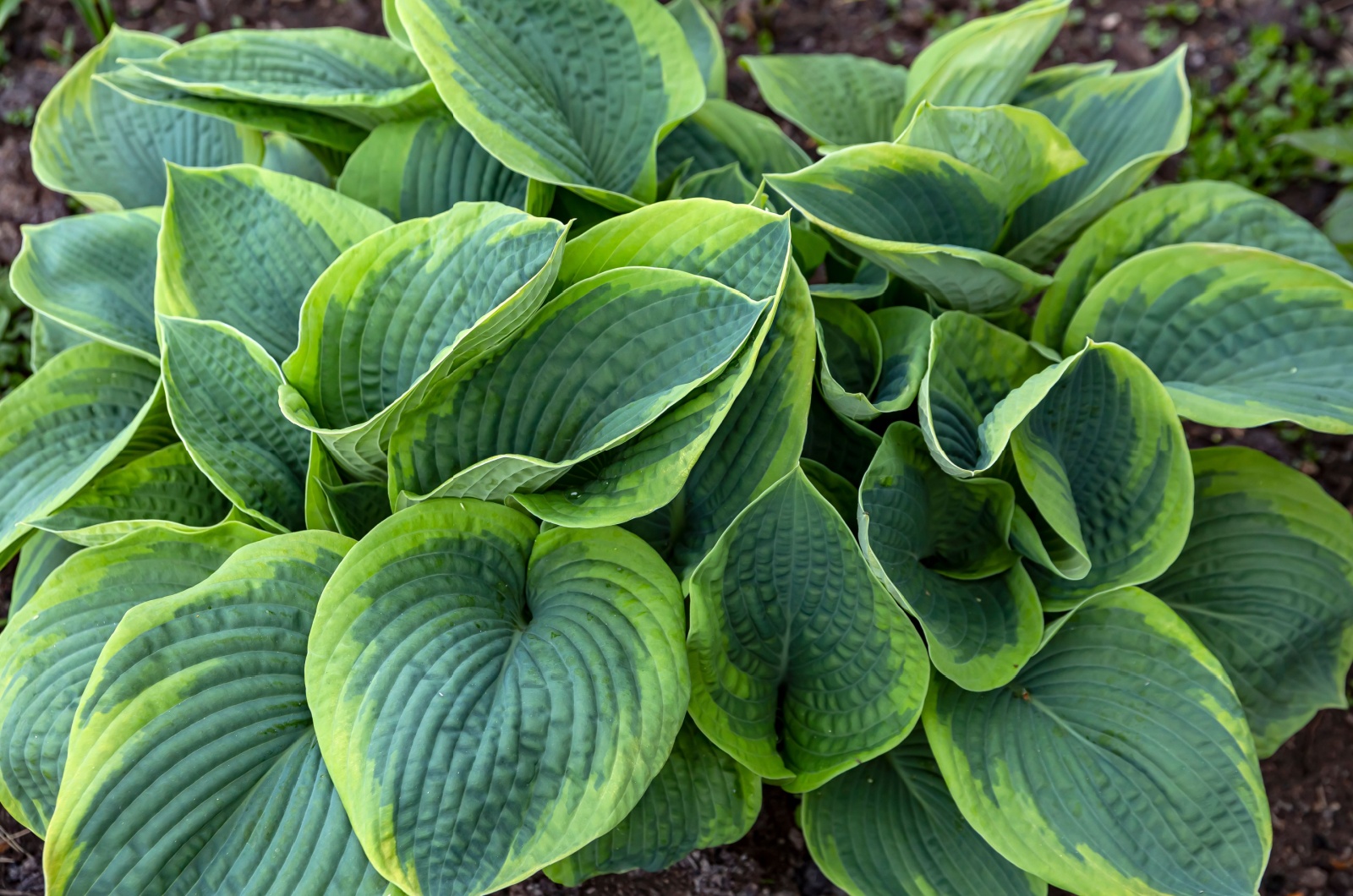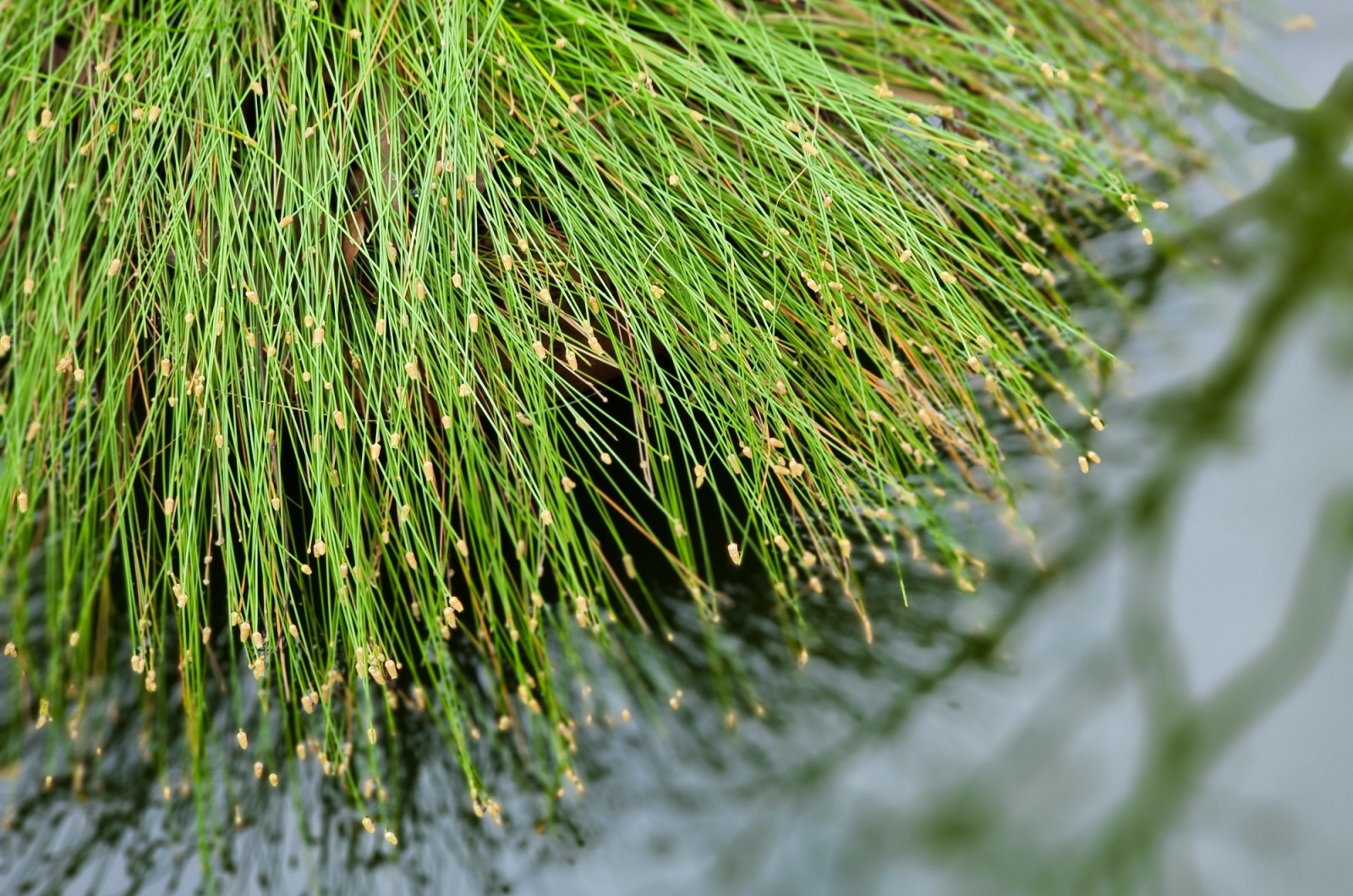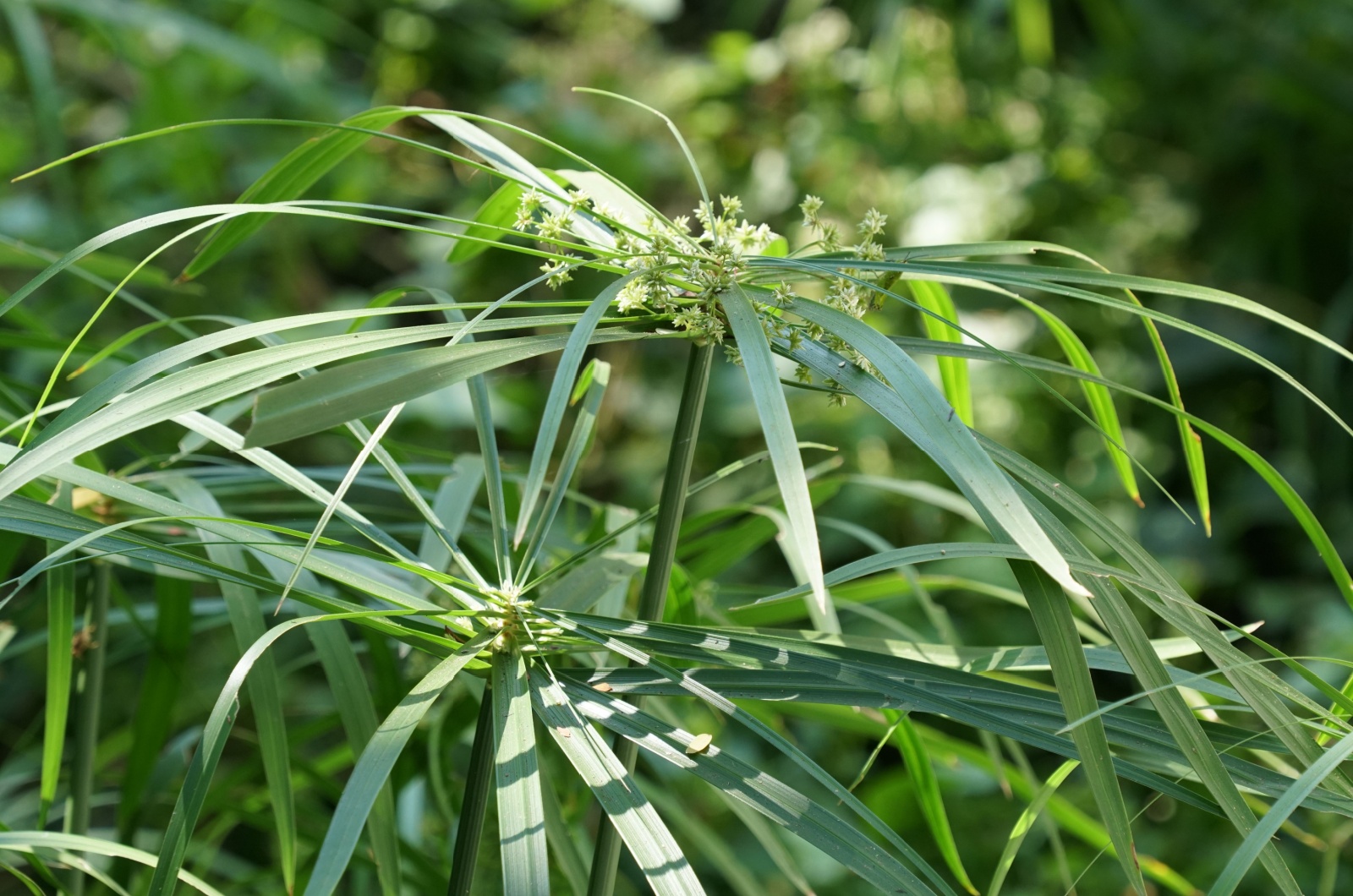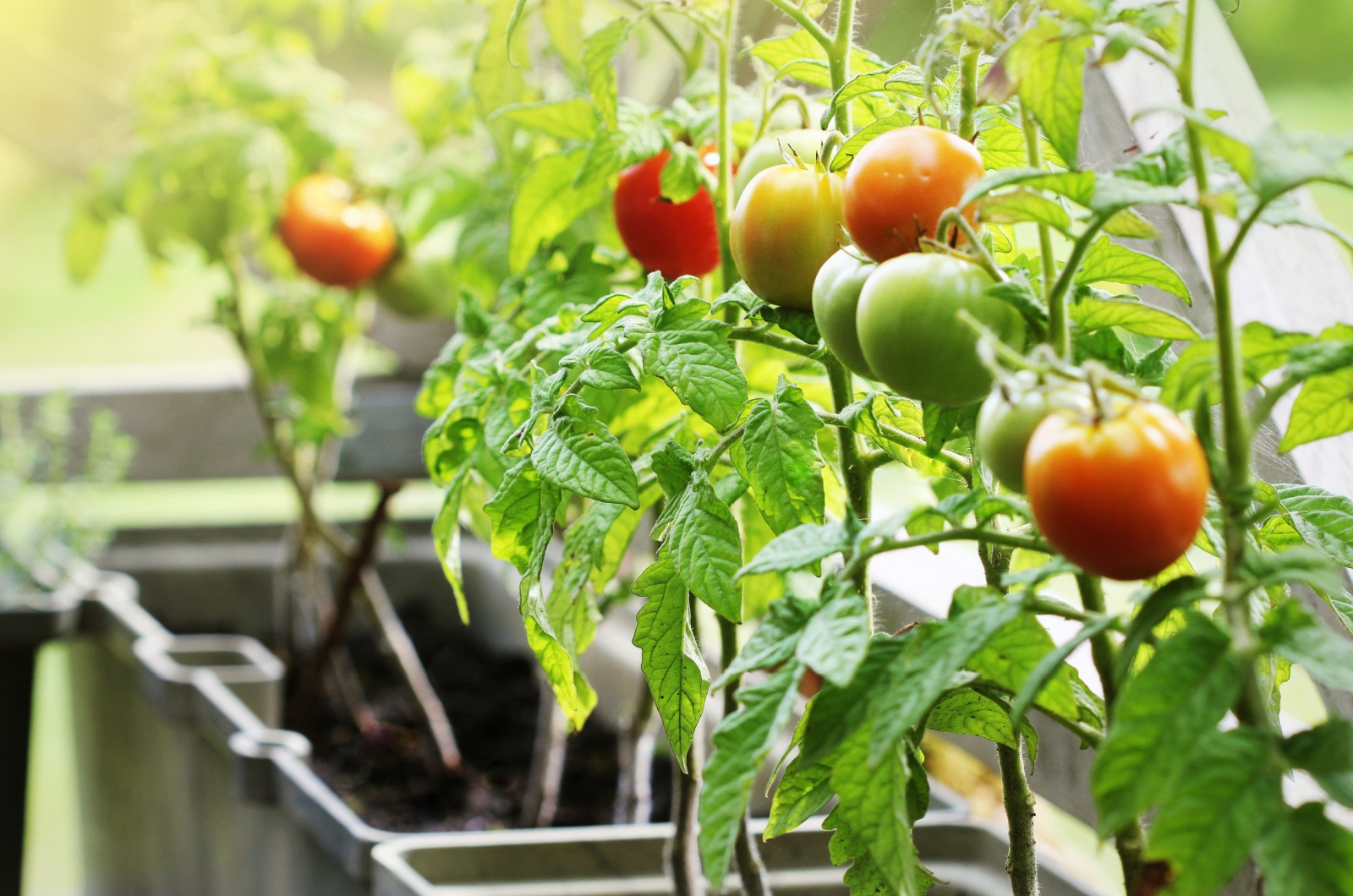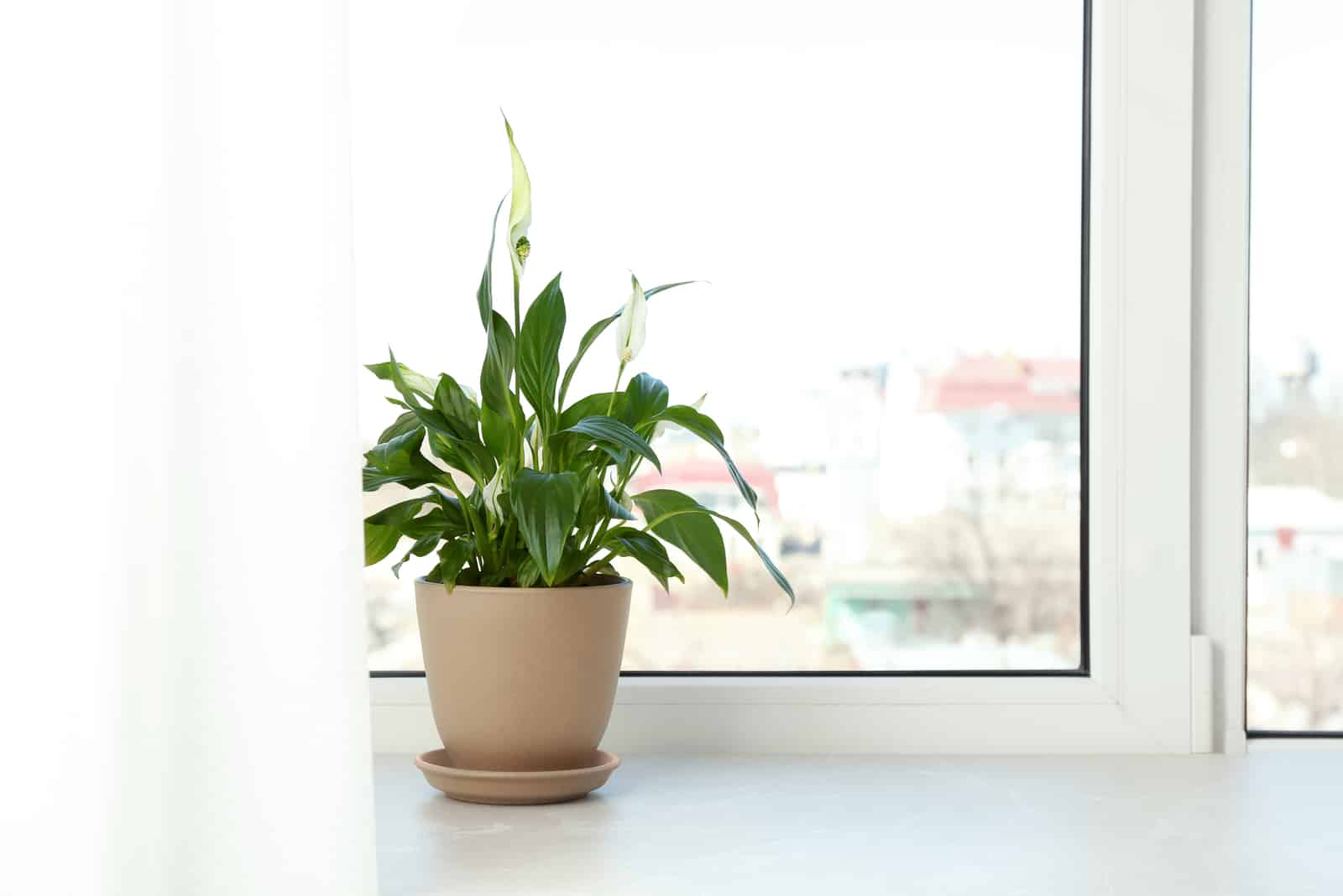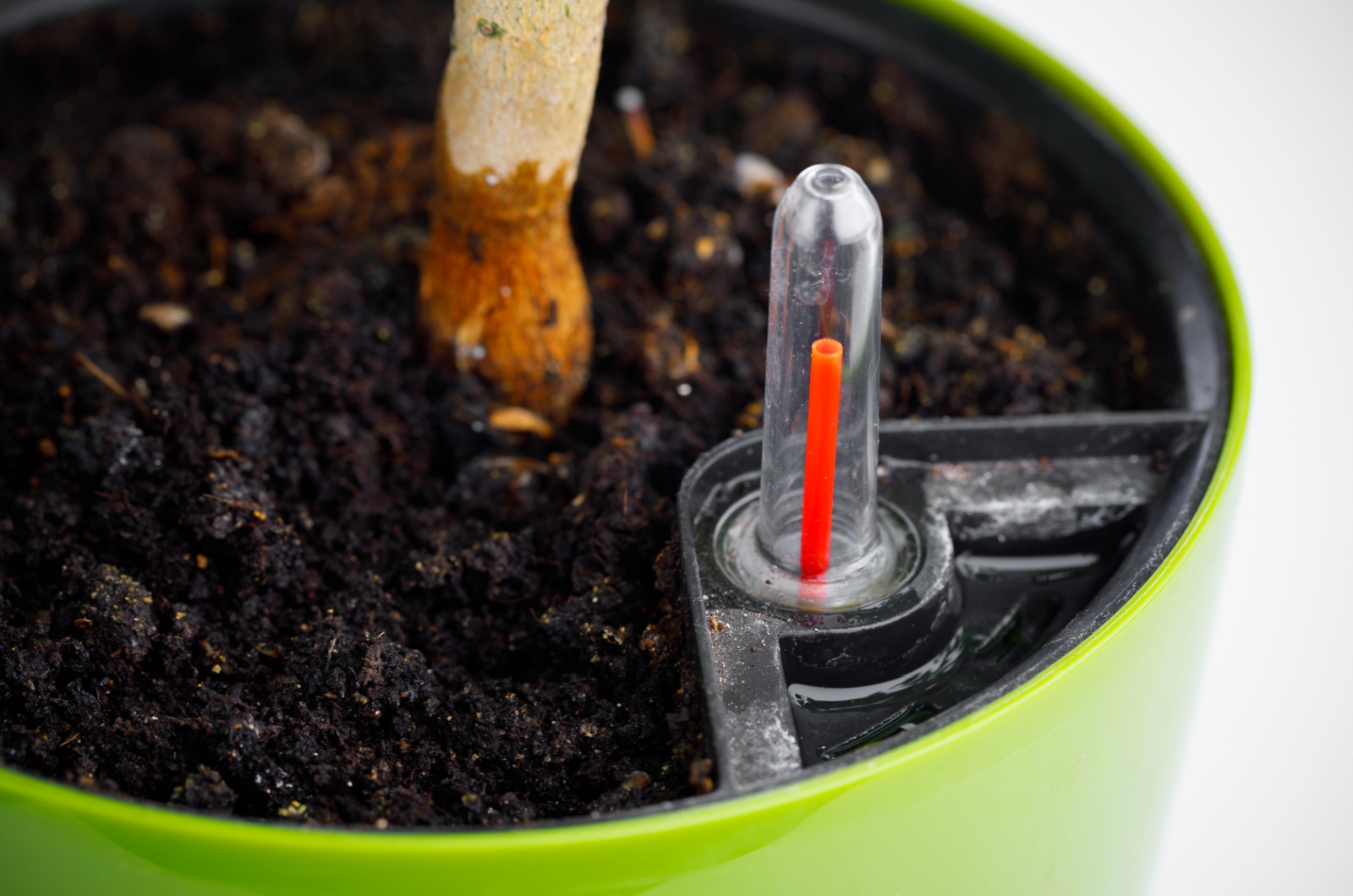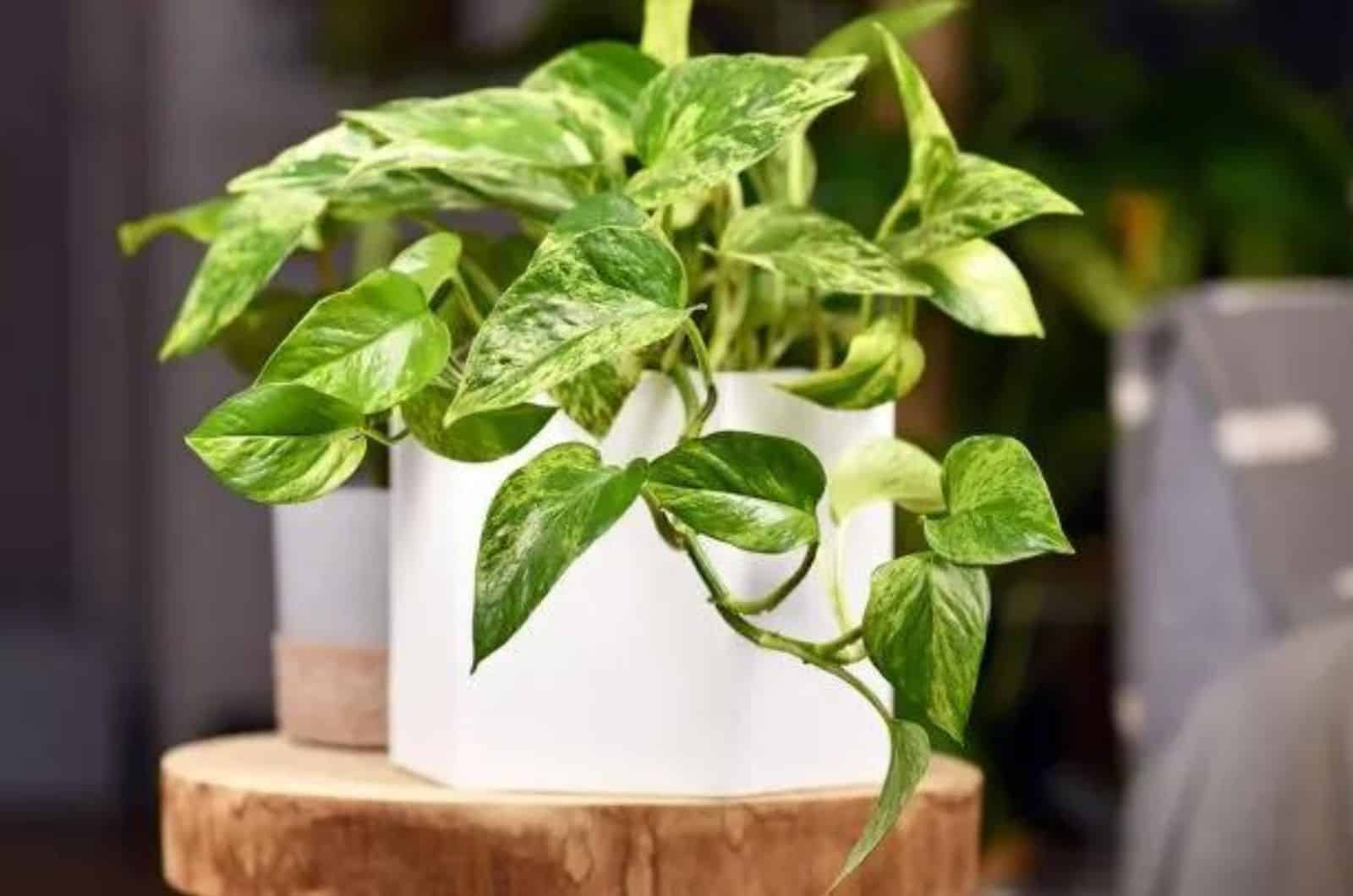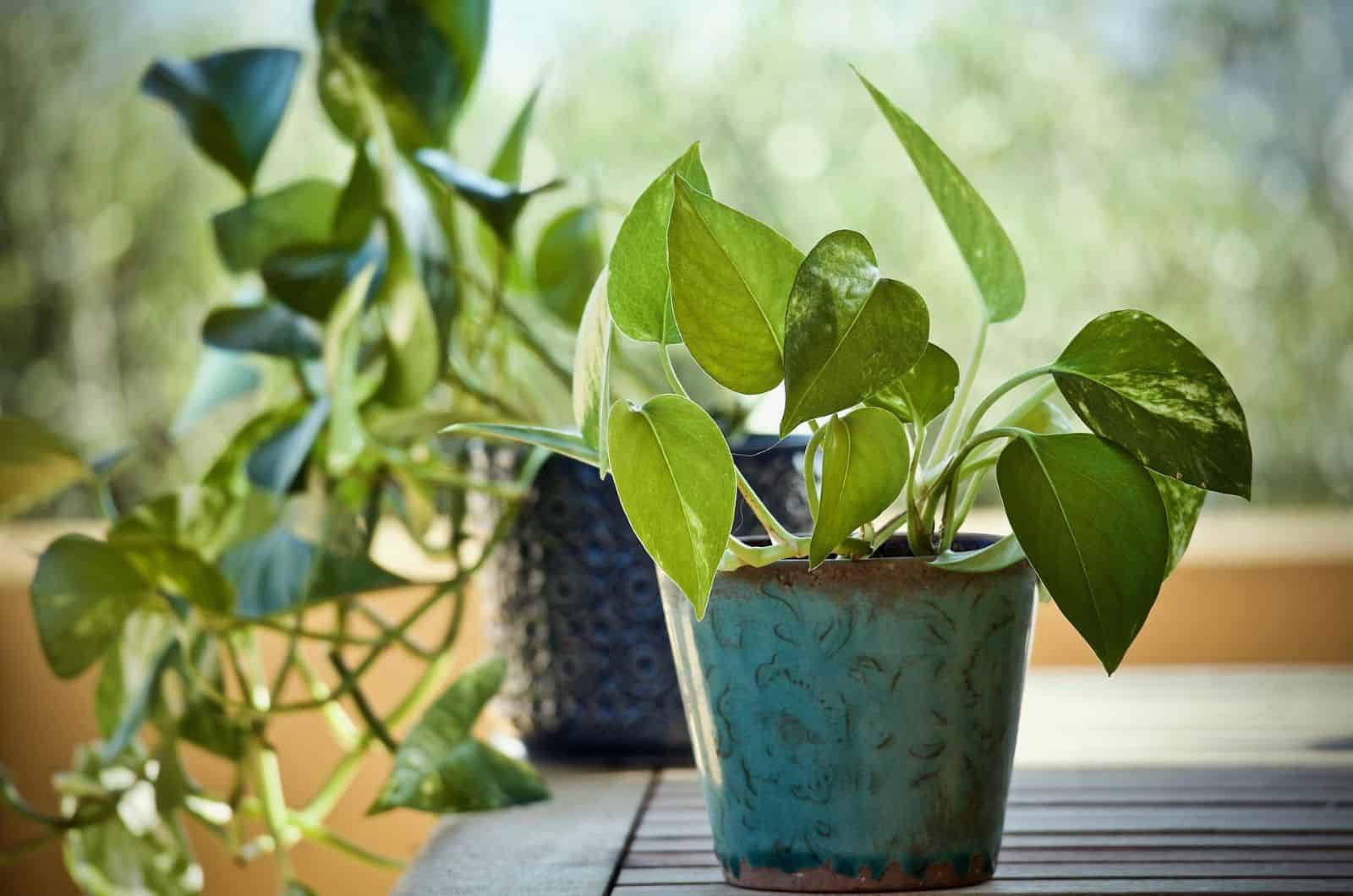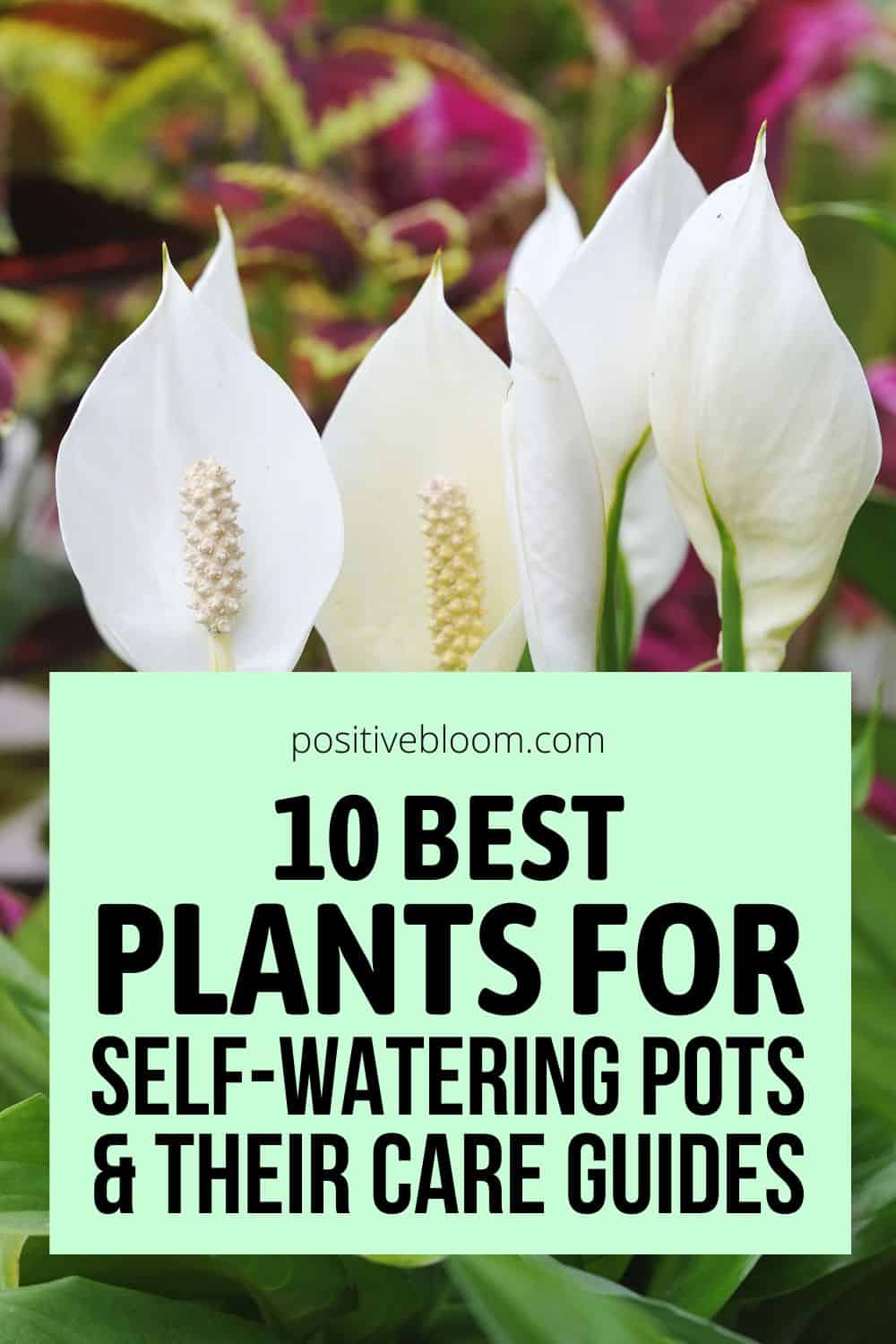We tend to always look for ways to ease our chores, so it’s only natural that we’d want to try out some self-watering containers. We only have to water these once a month or every three weeks, depending on the plant and the conditions that it grows best in.
However, these planters aren’t suitable for all plants since they can lead to overwatering and root rot.
But don’t worry; there are plenty of houseplants, veggies, and herbs that love these containers.
Below, you can read about the ten best plants for self-watering pots and how to care for them. However, we’ve also included some plants that dislike these planters and have noted a couple of self-watering planter tips.
Now, let’s start!
10 Best Plants For Self-watering Pots
There are many benefits of using self-watering containers to moisturize your plant, such as keeping the potting soil consistently moist, saving water, providing flexible growing space, etc.
However, there are also some common problems with self-watering pots, such as attracting mosquitoes and gnats, they aren’t suitable for all plants, not being able to be used outdoors, etc.
But, one of the things that we’re all dying to know is, do they cause root rot?
They actually don’t, or rather they do cause this fungal disease in plants that have a thick root system, but all the plants below can be grown in these pots without getting this infection.
So, let’s find out what those plants are!
1. Pothos
One of a grower’s and beginner’s favorite plants is the pothos because it looks attractive and is easily grown. It is also one of the plants that can be safely grown in a self-watering container.
Here is its main info:
[table id=338 /]The care guide of Shangri la pothos (and any other variety for that matter) is pretty straightforward; keep the plant in bright indirect light, plant it in a fertile and well-draining potting mix, feed it once a month, and water it whenever the topsoil dries out.
But what if we transfer it to a self-watering pot?
In that case, you’ll have to fill the water reservoir and then let the plant use all the water in it. Once there’s no moisture, wait some time before refilling it to avoid overwatering.
But don’t wait for too long, as that can lead to underwatering!
However, if you’re not sure about it, you can always grow your pothos plant in a hanging basket and enjoy its trailing habit.
2. African Violet
The African violet bear blossoms in many different shades of purple, and it can easily adorn any area.
It is also a plant that can thrive in a self-watering system, as long as you make some adjustments (but we’ll talk about them in a minute).
For now, let’s get to know African violets a bit better:
[table id=339 /]These plants thrive in east-facing windowsills, where they can get plenty of sunlight. They prefer slightly well-draining acidic soils with a pH between 5.8–6.5. Feed them with a diluted 14-12-14 fertilizer once a month or every six weeks.
If you’re growing this plant in a regular pot or a hanging planter, you should water it whenever the topsoil dries.
However, if you have decided to use a self-watering pot for this plant, there are a couple of things you can do to help this indoor plant thrive.
Choose a ceramic or terracotta container, since they don’t hold onto too much moisture. Also, don’t plant young plants with weaker root systems in self-watering planters since they might not make it.
Finally, use the pot’s overflow hole to allow the excess water to drain. The plant will still get moist soil to thrive in, but without the possibility of being overwatered.
3. Boat Orchid
The attractive blossoms of the boat orchid will transform the look of your living room, especially if you place them on a wooden flower shelf where the natural materials can bring out the best of them.
These are its specifics:
[table id=340 /]These evergreen plants thrive in dappled sunlight, so east-facing rooms and windows are a perfect location for them. You should plant them in rich and loose well-draining soil, such as in orchid mix that you can get in your local garden center or from Amazon.
Feed them with a balanced orchid plant food every other week during their growing season (from March to September), every third week in fall and late winter, and once a month during the harshest winter period.
This plant’s roots love to be in moist soil, so it’s a perfect plant for a self-watering pot.
The good news is that you don’t have to buy expensive self-watering planters for your orchids, as you can make a DIY pot in the comfort of your home.
Simply choose a container with at least one drainage hole, run a wick through the hole, and place it into a larger pot without a hole in the bottom, which will serve as a water reservoir.
When growing orchids in this system, it is best to plant them in LECA clay balls or another material that doesn’t hold too much water.
Of course, you will have to adjust their fertilization habits. Feed the plants whenever you replenish water in the reservoir and use hydroponics fertilizer, such as the GH Flora series.
4. Peace Lily
The peace lily is a low-maintenance plant, but if you want to use your watering can even less frequently, take a look at the paragraphs below.
But before we start, we’ll examine some main specifics about this plant:
[table id=341 /]These lilies are ideal indoor plants since they can survive in low and bright indirect light alike. They prefer consistently moist soil, so you should ensure that they have enough water for healthy growth and development.
But if you don’t have time to monitor them constantly or you simply forget to do it sometimes, you can always use a self-watering container to distribute the desired amount of water to your plant.
These pots can help eliminate both over and underwatering, two of the most common reasons that a peace lily droops.
However, self-watering planters won’t work on small plants, or rather, on young plants that have underdeveloped root systems.
Instead, wait until your plant is fully established before giving it a steady water supply.
Also, the peace lily plant care includes using a well-draining and moisture-retentive potting mix when planting. For instance, mixing some perlite, loam, peat moss, and coco coir is perfect.
Finally, feed this tropical plant once every month and a half with regular, well-balanced fertilizer.
5. Hosta
There are many different hostas out there, and plant lovers choose this plant based on its dense foliage, which can shed some light even in a dark place.
But let’s look into its main characteristics before examining its care guide:
[table id=342 /]Hostas can be grown as indoor or outdoor plants, but you have to ensure that they are out of reach of direct sun rays. Keeping them near an east-facing window or planting them in areas that get shade during the hot afternoon hours is the best way to take care of this plant.
These plants require fertile soil and can even tolerate heavy clay, as long as you amend it with some compost or manure.
You can feed these plants once a year with a small dose of a slow-release fertilizer in early spring.
Hostas love moisture, so they can do quite well in a self-watering container. However, overwatering can be a big issue for beginners, so investing in a pot that will do the watering for you is an excellent way to get some help.
However, always use the overflow to help the excess water drain, and add more water when you see that your plant has drunk everything.
6. Fiber Optic Plant
You might be wondering what is lacking in your indoor garden, and one of the unexpected answers could be a fiber optic plant.
Here are its primary specifics:
[table id=343 /]This plant’s foliage truly looks like optical fibers, so it’s understandable why it found its way into our homes. It thrives in full sun and loves moisture, so gardeners frequently use it as a marginal plant in ponds.
However, unlike other plants on this list that require moist soils, the fiber optic plant prefers wet growing mediums. Therefore, you should fill the self-watering planter to its top.
Since it is native to peaty coastal regions, you should plant it in a peat-based potting mix.
Finally, this plant doesn’t require too much additional food, but it should still be fertilized with a balanced fertilizer (diluted to half-strength) once a month during its growing season.
7. Umbrella Palm
Another plant suitable for water gardens and ponds is the umbrella palm. However, this type of plant is not a real palm, but that doesn’t stop us from enjoying its attractive foliage.
These are its general specifics:
[table id=344 /]You can grow this plant in sunny or somewhat shaded locations, but you should protect it from the scorching midday sun.
It prefers peaty, humus-rich soils, and you should fertilize it every three months with a slow-release fertilizer, such as triple 14.
The growing medium should also be wet at all times, so keep the self-watering pot filled to the top and replenish the moisture frequently.
The umbrella palm is very sensitive to underwatering, and its tips will start turning brown if you don’t refill the self-watering planter regularly.
8. Snake Plant
When we remember all the requirements that snake plants have (well-draining soil, a pot with drainage holes, and irrigation only when the top few inches of the growing medium dry out), we begin to wonder whether self-watering planters will work for this plant.
Well, there are a couple of things that you need to know, but we’ll examine them in the paragraphs below.
For now, let’s focus on this plant’s primary specifics:
[table id=345 /]When we look for the best pot for the snake plant, we need to calculate the size of the plant, drainage, material, and many other things that might seem important.
However, we don’t necessarily have to discard the option of self-watering pots. You just have to make sure to use the overflow hole, plant your snake in LECA clay pebbles, and feed it with some hydroponics fertilizer whenever you replenish the moisture.
Of course, ensure that this plant gets plenty of indirect sunlight, and if you really want to grow it in soil, plant it in a loamy, well-draining, slightly acidic medium.
9. Basil
Most herbs thrive in water, but we have chosen to talk about basil in particular since we can use it in cooking, for repelling mosquitoes, etc.
This is its primary information:
[table id=346 /]Basil thrives in full sun, so make sure it gets around 6–8 hours of sunlight each day. It thrives in fertile and loamy soils with a pH level between 6.0–7.0.
If your growing medium is not fertile enough, you can always amend it with some blood meal or compost.
If the soil is rich in nutrients, you don’t have to fertilize this plant, but you can always add some manure or compost. But if you do feel that this herb might need some extra help growing, you can add some light plant food 1–2 times during its growing season.
Finally, watering! We can grow this plant in self-watering pots, but we have to be careful. It needs a drying period, so don’t refill the reservoir as soon as it’s empty.
Wait until the soil is a bit dry before replenishing the water.
10. Cherry Tomato
Cherry tomatoes are great veggies as you can use them for fancy salads and decorations, healthy meals, and for making tomato sauce.
The good news is that this plant can also be grown in a self-watering pot.
But before we get into any of the care guide details, let’s look into some general specifics about this plant:
[table id=347 /]These plants require at least 6–8 hours of light per day for the best fruiting, so choose a full sun location.
The planting medium should be loose and well-draining, so loamy and sandy soils are the best option.
For fertilization, choose plant food with less nitrogen than phosphorus and potassium (unless your soil is extremely low on nitrogen), or use organic fertilizers.
These plants thrive in consistently moist soils, so self-watering planters are perfect for these vegetables. Simply monitor the water reservoir, and replenish the moisture when the plant drinks it.
What Houseplants Hate Self-watering Planters?
We talked about many different plants that love self-watering planters, but do all members of flora thrive in these containers?
Well, no! Succulent and cactus plants are drought-tolerant and actually benefit from less moisture. Therefore, sitting in water all day long would be the death of them.
More particularly, self-watering containers would soon lead to overwatering and root rot, which could kill your plant if not caught on time.
There are a couple of tips on how to choose the best pot for cactus plants, such as picking a planter that fits your plant’s size, ensuring it has drainage holes, etc.
Self-watering Planters Care Tips
We always look for innovations in everything, so it’s not surprising that we have gone from outdoor growing to container gardening. We have even improved the latter one by using self-watering planters and reducing the time we have to spend actively caring for our plants.
But, we need to be careful about these pots because they do have their drawbacks.
One of the main things that can help you grow healthy plants is getting the best self-watering container you can find, such as a Lechuza one or another great brand.
Of course, even these planters can lead to root rot or attract mosquitoes, so let’s learn how to avoid these issues!
How To Avoid Root Rot
One of the worst things that you can notice is symptoms of root rot, such as stunted growth, a drooping and wilting plant, and discolored foliage.
We already mentioned that choosing a good pot is very important. Most self-watering containers come with an overflow hole, which prevents overwatering, but you can also choose one that has a water level indicator.
This indicator will make monitoring your plant easier, and you won’t have to worry about underwatering.
Also, even these pots have a drainage hole that you can use to release the water if there’s too much or if winter approaches and your plant doesn’t need that much moisture.
Preventing Self-watering Plant Pots From Attracting Mosquitoes
We all know that these pesky insects thrive in humid locations, so having a self-watering container in your home may become their breeding ground.
However, there are some things that you can do about this issue.
The first thing you should do is change the water regularly since undisturbed water attracts mosquitoes. These insects can easily lay their legs in the shallow water of your self-watering container, and you can get rid of the possible mosquito eggs by regularly changing the water.
Also, cover the drainage and overflow holes with some insect screen, which will keep the mosquitoes out.
Q&A Corner
There are a couple more issues we need to pay attention to before we can finish this article.
Below, you can find the questions (and the answers to them, of course) that you’ve asked us most frequently!
So, let’s start!
What are some advantages of self-watering pots?
There are many advantages to self-watering pots, but the most important ones are that they prevent overwatering and keep the roots moisturized at the same time.
They minimize the possibility of fungal diseases, save water, and even make it difficult for weeds to grow, reducing the time you spend on weeding.
Do self-watering pots need to be watered on a regular basis?
When and how often you’ll have to replenish water inside the self-watering container really depends on the plant.
Whenever you see that the reservoir is low on water, you should replenish it to avoid stressing your plant.
Final Thought
This article brought you the ten best plants for self-watering pots, but we also examined some that don’t thrive in these containers.
We also included a couple of tips for using self-watering planters, which will help you to avoid root rot and prevent mosquitoes from breeding in the actual pot.
Of course, a quality pot, regular monitoring of the water level, and even an insect screen can help with root rot and mosquitoes.
Enjoy the new plant growing system, and until next time!
Like this post? Share or pin it for later!

